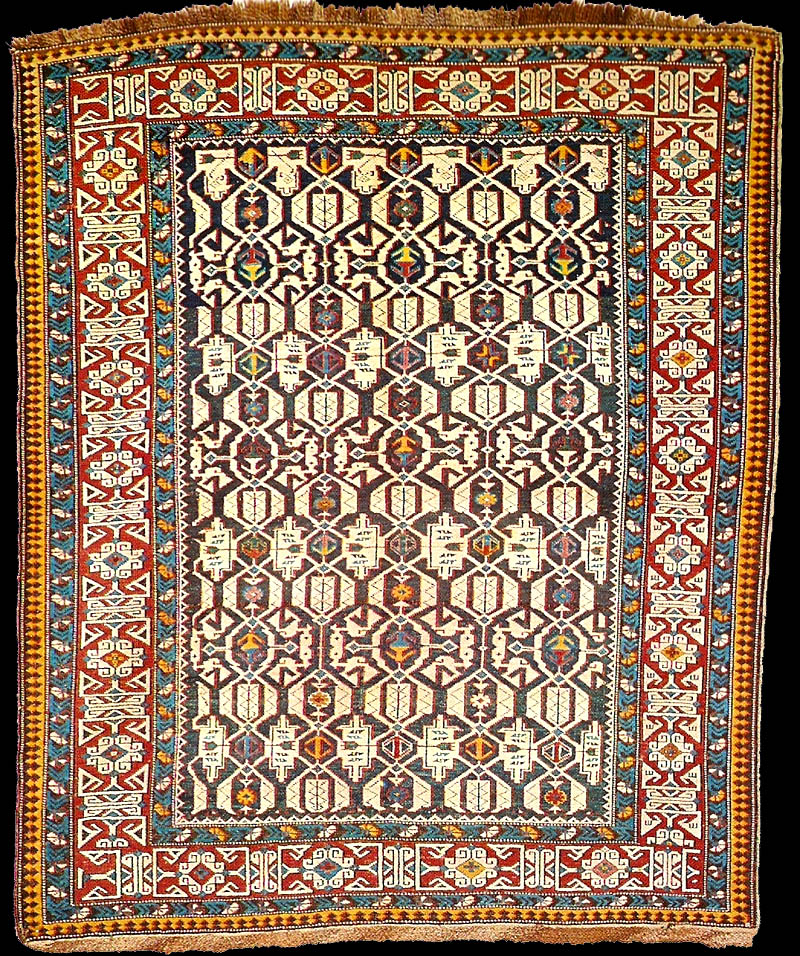|
51. KUBA KONAGKAND
19th century, 4'10" x 4' [m. 1.48 x 1.24] Warp: wool
Weft; wool, two shoots after each row of knots
Knotting: Ghiordes, wool, 210 knots per square inch [3300 per dm.2]
This is one of the classic Konagkand styles, and it is always made up of the
same basic elements. In a blue field is a regular all-over trellis design in
white that may be said to intertwine the way a field of arabesques does in a
Persian rug. In the "holes" found in any design of this nature are flowers
and other small bits of design in any number of colors. Some of the white
trellis is marked with black. The main border is designed from white kufic
letters.
on red and is seen again in Plate 49. The letters have been stylized so many
times that they are merely decorative and actually do not say anything. It
is evident that these "letters" have been interspersed with stepped polygons
similar to those of the Chichi tribe (Plates 61-64).
The two guard borders are typical of Kuba designs in that they are blue and
black, like the ones in Plate 62 and several others in the Kuba section. (Konagkand
is south of Kuba.) This is a rather old preference and is rarely seen in
rugs made after the middle of the nineteenth century.
The interplay of light and dark in this rug is subtle but characteristic.
The light colors have a washed effect.
The other type of rug typical of Konagkand has a large stepped rhombus in
the middle of the field and a square in each corner.
Luciano Coen's and Louise Duncan's "Oriental
Rug" book. plate: 51
 |
